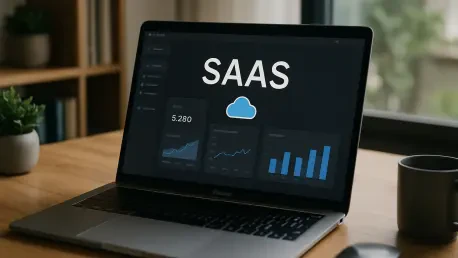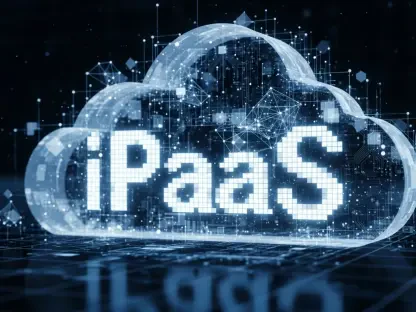In the competitive landscape of Software as a Service (SaaS) businesses, revenue recognition is not simply a matter of bookkeeping; it is a critical element that determines financial accuracy, investor confidence, and the overall health of a company’s financial statements. Properly recognizing revenue ensures that financial reports reflect the actual performance of a SaaS company, thereby avoiding the pitfalls of financial misrepresentation that can ensnare even established businesses. As the SaaS industry evolves and grows, companies face the challenge of accurately recognizing revenue in varied and complex scenarios, including annual contracts paid upfront, usage-based billing models, and subscription-based services with potential refund requests. Understanding and implementing appropriate revenue recognition methods is essential not only for compliance but also for maintaining transparency and trust with investors and stakeholders. This article delves into strategies that SaaS firms can adopt to master revenue recognition effectively.
Understanding Revenue Recognition
Revenue recognition is a fundamental accounting principle that determines the specific conditions under which income becomes realized as revenue for financial reporting purposes. For SaaS companies, this principle is vital to ensure that financial statements correctly represent the economic reality of transactions, rather than merely the inflow of cash. Recognizing revenue prematurely can inflate earnings, misleading stakeholders, while recognizing it too late can understate revenue, affecting business valuations and operational decisions. In essence, the goal of revenue recognition is to match the timing of revenue reporting with the actual delivery of services or products.
Understanding how to apply revenue recognition standards is particularly crucial for SaaS companies with recurring revenue and multi-step delivery models. The established standards—specifically the International Financial Reporting Standards (IFRS 15) and the Generally Accepted Accounting Principles (GAAP) in the United States under ASC 606—require companies to follow a systematic approach. These standards provide a comprehensive framework for companies to account for complex billing arrangements, ensuring consistency across financial reports. They dictate the timing and manner in which revenue must be recognized, often following a five-step process that involves identifying contracts, performance obligations, and transaction prices, among others. Mastery of these standards is indispensable for SaaS firms aspiring to maintain financial clarity and investor trust.
ASC 606 and IFRS 15: Key Standards
ASC 606 and IFRS 15 have significantly impacted the way SaaS companies recognize revenue by establishing a unified global framework. ASC 606, developed by the Financial Accounting Standards Board (FASB), is part of GAAP, designed to bring coherence and transparency to financial reporting. Meanwhile, IFRS 15, introduced by the International Accounting Standards Board (IASB), aims to standardize revenue recognition practices across international markets. These standards compel companies to recognize revenue in accordance with their performance obligations, reducing ambiguity and enhancing comparability across financial statements.
The core principle of these standards is that revenue should be recognized when control of a good or service transfers to a customer, rather than when payment is received. This is a departure from previous methods that allowed revenue recognition based on cash flow or billing cycles. For SaaS businesses, this means adopting a methodical approach to categorize each contract, identify distinct performance obligations, determine transaction prices, and recognize revenue as each obligation is satisfied. This structure has brought much-needed clarity and consistency to the industry, enabling companies to present a more accurate portrayal of their business operations.
Despite their similarities, ASC 606 and IFRS 15 have specific technical differences, mainly in how contract modifications and disclosures are handled. SaaS firms operating globally or across different jurisdictions may need to adhere to both frameworks, demanding meticulous attention to detail. It is imperative for companies to not only understand these standards but also implement robust systems and processes to ensure compliance. This rigorous adherence can help prevent financial misstatements and safeguard investor confidence.
Essential Steps in Revenue Recognition
For SaaS companies, navigating the revenue recognition process involves adhering to a five-step model that aligns with ASC 606 and IFRS 15. This systematic approach begins with identifying contracts with customers, where every agreement—be it written, verbal, or implied—sets the groundwork for revenue recognition. Without a valid contract, other steps cannot proceed, making this foundational step crucial for any financial accounting.
Once contracts are identified, the next step involves pinpointing performance obligations. Every SaaS agreement might include various deliverables—such as software access, updates, or onboarding sessions—that constitute separate performance obligations. Recognizing these distinct obligations is vital, as it dictates when and how revenue is recognized throughout the contract term. This detailed selection ensures that revenue recognition reflects the true nature of services provided and aligns with the transactional realities of the business model.
Following the identification of performance obligations, determining the transaction price becomes essential. This price often represents the total expected payment from a customer adjusted for discounts, usage fees, or credits. For SaaS businesses, this step can be intricate due to variable pricing models or extended payment terms. The transaction price sets the stage for the allocation step, where it must be divided among the identified performance obligations, ensuring each reflects its fair share of the total revenue. Completing these steps meticulously guarantees an authentic representation of revenue in financial statements.
Real-World Scenarios and Challenges
SaaS companies encounter various challenges and real-world scenarios that complicate revenue recognition practices. These include dealing with changes in contract terms, handling variable usage pricing, and grappling with bundled service offerings. Additionally, frequent contract modifications and upsells necessitate constant recalibration of revenue recognition processes to align with financial reporting standards. This dynamic environment requires SaaS companies to maintain flexibility while ensuring accuracy in their financial statements.
One typical scenario involves annual contracts where customers pay upfront for services delivered over time, requiring the revenue to be recognized proportionally rather than immediately. Such contexts highlight the importance of aligning revenue recognition with service delivery to prevent distortions in financial reports. Similarly, usage-based billing models, where customers are charged based on service consumption, demand companies to monitor and measure usage intricately to reflect the correct revenue amount in each reporting period.
Additionally, changes in customer contracts, whether through modification or upsells, introduce complexities in revenue allocation. Each contract adjustment requires an assessment of whether the new services or features are distinct from the original obligations. This need for reassessment underscores the importance of implementing responsive accounting systems to accommodate changes without risking compliance challenges. By understanding these scenarios, SaaS firms can better implement tailored strategies to manage the nuanced requirements of revenue recognition effectively.
Revenue Recognition Methods in Practice
The choice of revenue recognition method can significantly impact how SaaS companies report their financial performance. Different methods suit various business models, industries, and contract types, necessitating a tailored approach to select the most appropriate one. SaaS businesses, particularly those relying on recurring revenue, typically favor methods that align revenue recognition with their service delivery over time, ensuring that financial statements reflect continual business activity accurately.
Among the prevalent revenue recognition methods are the proportional performance and sales-basis methods. The proportional performance method, often employed by SaaS companies, recognizes revenue based on the extent to which performance obligations have been fulfilled. This approach aligns well with subscription models, where services are provided consistently over time, such as monthly access to software platforms. On the other hand, the sales-basis method, popular in usage-based billing, records revenue at the point of actual service delivery, ensuring that recognized revenue mirrors actual product consumption.
Other methods, such as the percentage of completion or completed contract, cater to long-term projects or milestone-based contracts, occasionally applicable in bespoke SaaS implementations. Companies selecting revenue recognition methods must weigh factors like cash flow, compliance demands, and customer payment terms. The choice must align with the company’s operational realities to ensure financial transparency and integrity. Through meticulous selection and implementation, SaaS firms can maintain the credibility of their financial reporting while mitigating risks associated with non-compliance.
Conclusion: Navigating the Future of Revenue Recognition
Revenue recognition is a key accounting principle that specifies when income should be acknowledged as revenue in financial statements. For SaaS companies, it’s crucial to adhere to this principle to ensure that financial statements accurately depict the true nature of transactions, rather than just reflecting cash flow. If revenue is recognized too early, it can exaggerate profits and mislead stakeholders, while recognizing it too late may understate actual revenues, impacting business valuation and decisions. The primary aim of revenue recognition is to align the timing of revenue reporting with the actual delivery of goods or services.
For SaaS companies characterized by recurring revenue streams and multi-step delivery processes, understanding revenue recognition standards is particularly important. The key standards—International Financial Reporting Standards (IFRS 15) and the Generally Accepted Accounting Principles (GAAP) under ASC 606 in the U.S.—demand a systematic approach. These standards offer a detailed framework for handling complex billing scenarios, ensuring uniformity in financial reports. They dictate when and how revenue should be recognized, usually through a five-step model that involves identifying contracts, performance obligations, and transaction pricing. Mastery of these standards is vital for SaaS companies to maintain transparency and trust with investors.









